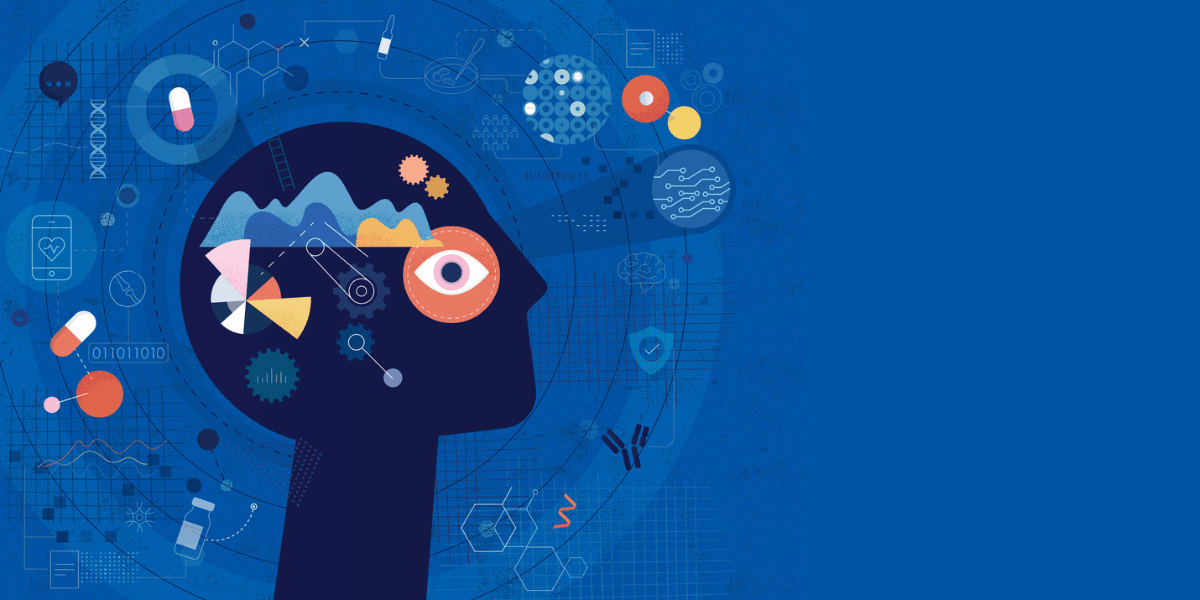
Photo credit: DrAfter123/iStock
The USC Viterbi’s Information Sciences Institute (ISI) is a leader in artificial intelligence research from defense technologies to natural language to fairness. In 2022, ISI sought to broaden its pursuits, launching the Center on AI Research for Health (AI4Health) to better understand and treat the human condition through a computational and engineering lens. “AI in medicine used to be a playground, but now it’s possible to do things that are practical,” said Michael Pazzani, AI4Health director. “It’s all because much more data is now available.”
Following are some of AI4Health’s sprouting projects of 2023.
Optimizing Radiation Therapy With Quantum Computing
Radiation therapy is like aiming for the bullseye. Radiation oncologists precisely target tumors, carefully defining the “burning region” to stay within the tumor’s edges while minimally impacting the surrounding healthy tissue. However, designing such clear-cut radiation profiles is difficult and time-consuming with current technologies. Amir Kalev, a quantum information scientist at ISI, is investigating whether quantum computing can speedily and cost-effectively detect tumor edges.
Quantum algorithms have been previously proven to be efficient edge detectors due to their property of superposition. Although current quantum technologies lag behind advanced classical computers and AI, Kalev—who is joined by Lijun Ma, a professor of clinical radiation oncology at the Keck School of Medicine of USC—hopes to find a place for quantum in health sciences.
“Quantum computing is not a magic box that can solve everything,” Kalev said. “But what scientists can do is explore whether there are any niche tasks that quantum can help beyond what conventional methods can do.”
The duo plans to investigate if quantum computing can work in 3D and when tumor edges are unclear. They will also test whether quantum AIs build better radiation treatments.
Designing Personalized Treatments for Parkinson’s Disease
Parkinson’s disease (PD) is a progressive neurodegenerative disorder primarily affecting movement. The loss of dopamine-producing neurons causes irregular brain activity and PD’s characteristic symptoms of tremors and rigidity. One treatment is deep brain stimulation (DBS), the surgical implantation of electrodes that send electrical impulses to specific parts of the brain. Stimulation parameters—like frequency and strength—must be tailored over time, however, as the patient’s brain changes. AI can improve precision in this process.
“By looking at a patient’s responses to DBS, AI can help fine-tune stimulation for optimal symptom control, potentially making the treatment more effective and personalized,” said Dominique Duncan, an assistant professor at the USC Stevens Neuroimaging and Informatics Institute.
Samantha Cohen, Duncan’s doctoral student in biomedical engineering at USC who is leading the project, plans to use AI to find biomarkers in neuronal shape and electrophysiology that are unique to PD. Her interdisciplinary work has deepened her appreciation for the brain’s complex circuitry.
“It’s fascinating, from an engineering perspective, to see how biology is controlled by principles of electricity and how different neurons can be modeled as circuits,” Cohen said. “It’s been fun to model the brain as an engineer.”
Uncovering Biomarkers for Depression
The Defense Advanced Research Projects Agency (DARPA) has been funding the development of clinical tools to help members of the military and veterans at risk. It is presently difficult, however, to identify individuals at risk for depression and suicidality as current methods rely on self-reporting and screening. With a large team of researchers, Shrikanth Narayanan, a research director at ISI, and Kristina Lerman, a principal scientist at ISI, are looking to find objective biomarkers for these conditions.
Revealed in electroencephalograms (EEGs) that capture and record the brain’s electrical activity, depressed patients more quickly responded to language about depression than about happiness. AI can analyze these EEGs to identify “honest signals of depression,” Lerman said.
With such a powerful tool, the researchers must establish its limitations and ethical usage. “We are constantly thinking about the ethical implications: who we are collecting the data from, what are we going to do with it, how should it be shared?” Narayanan said. “All these questions are going to be baked into the process of the research rather than an afterthought.”
Mental health is an increasingly important issue, especially on university campuses. The team hopes to expand their work to help more populations at risk.
“This technology is driven by questions about veterans but can also be applied to the youth mental health crisis,” Lerman said. “That’s why this research is so important—it addresses a prevalent problem that touches the lives of many
Spotting Genetic Disorders Through Facial Features
With computer vision — the subfield of AI that enables computers to acquire, process and analyze digital images and make recommendations or decisions based on that analysis — images are quite literally more than meets the eye. AI can “see” subtleties in images that a human cannot.
Wael Abd-Almageed, a research associate professor and the founder of the Visual Intelligence and Multimedia Analytics Laboratory (VIMAL) at ISI, is on a mission to leverage computer vision for medical diagnosis and personalized treatment. With a focus on congenital adrenal hyperplasia (CAH), a genetic condition impacting the adrenal glands, Abd-Almageed and his team explore AI’s potential to identify phenotypic biomarkers — observable characteristics linked to the condition. For example, the subtle changes in the face that correlate with CAH.
“We are trying to find a cost-effective, noninvasive phenotypic biomarker that can be used to assess the severity and progression of CAH and personalize disease management and treatment to improve the quality of life and health outcomes for patients,” said Abd-Almageed.
To do this, they look at the physical form and structure of a patient. “We are using AI to analyze the features and 3D morphology of the face and correlate these features with CAH,” he said. Abd-Almageed hopes to develop “FDA-approved systems to help pediatricians manage this and similar diseases to improve the quality of life of children.”
Predicting Diet and Diet-Related Disease From Smartphone Mobility Data
How many fast-food restaurants do you come across throughout your day and what does that have to do with your health? A lot, says Abigail Horn, a lead scientist at ISI.
In a groundbreaking study, Horn, along with researchers from three USC schools, MIT, and Sabancı University in Turkey explored the relationship between smartphone mobility data and individuals’ dietary habits and health outcomes. The team sought to measure people’s dynamically experienced food environments at scale across diverse populations. The study focused on the impact of physical food environments, such as fast-food outlets, on people’s dietary choices and health. While previous research had primarily examined home neighborhood food environments, this study used smartphone mobility data to track individuals’ visits to various food outlets throughout their daily activities. The researchers were looking to see whether these mobility patterns could predict diet-related disease rates.
Horn was joined by Kayla de la Haye, Director of the Institute for Food System Equity at USC Dornsife Center for Economic Research, who has expertise in how people make decisions about what to eat; and Esteban Moro, Professor and leader of the Social Urban Networks group at the Network Science Institute, Northeastern University, who led the team at MIT Connection Science accessing and analyzing the data.
The results were exciting. “We know there is a relationship between fast-food outlet visits and fast-food intake, as well as between fast-food intake and diet-related diseases, but wow, this data source does a really good job of capturing that!” said Horn.
Remarkably, mobility data proved to be a more accurate predictor of individuals’ health outcomes than their self-reported dietary habits, data the researchers had thanks to a partnership with the LA County Health Department.
This innovative approach enables a more realistic, representative understanding of people’s dynamic patterns of food access at an unprecedented scale in time and space, helping to re-define notions of “food deserts” and “food swamps” to account for lived environments beyond the home neighborhood, providing valuable data and insights for designing effective public health programs and policies to combat unhealthy diets.
Published on February 5th, 2024
Last updated on February 6th, 2024













